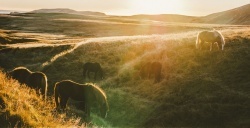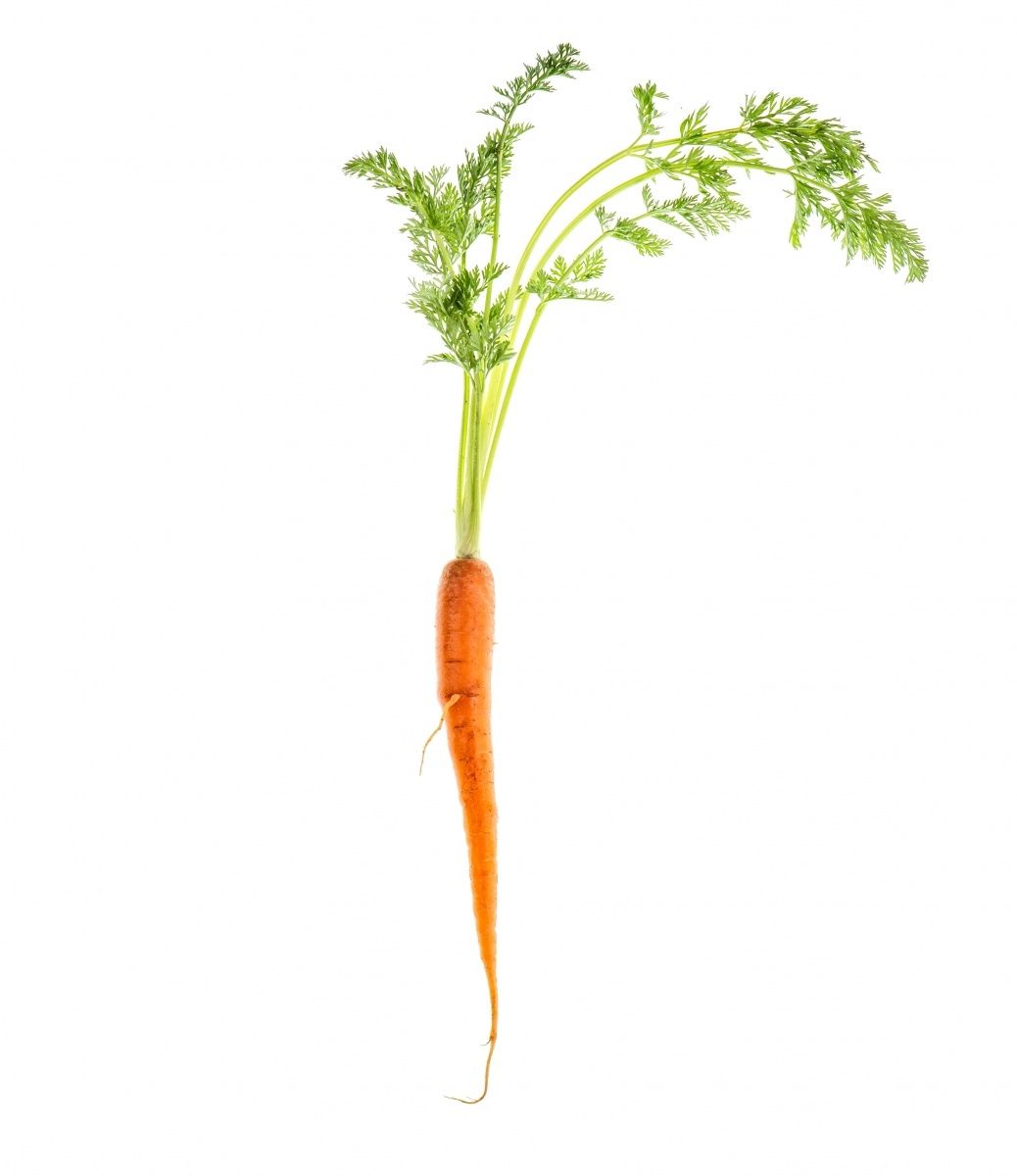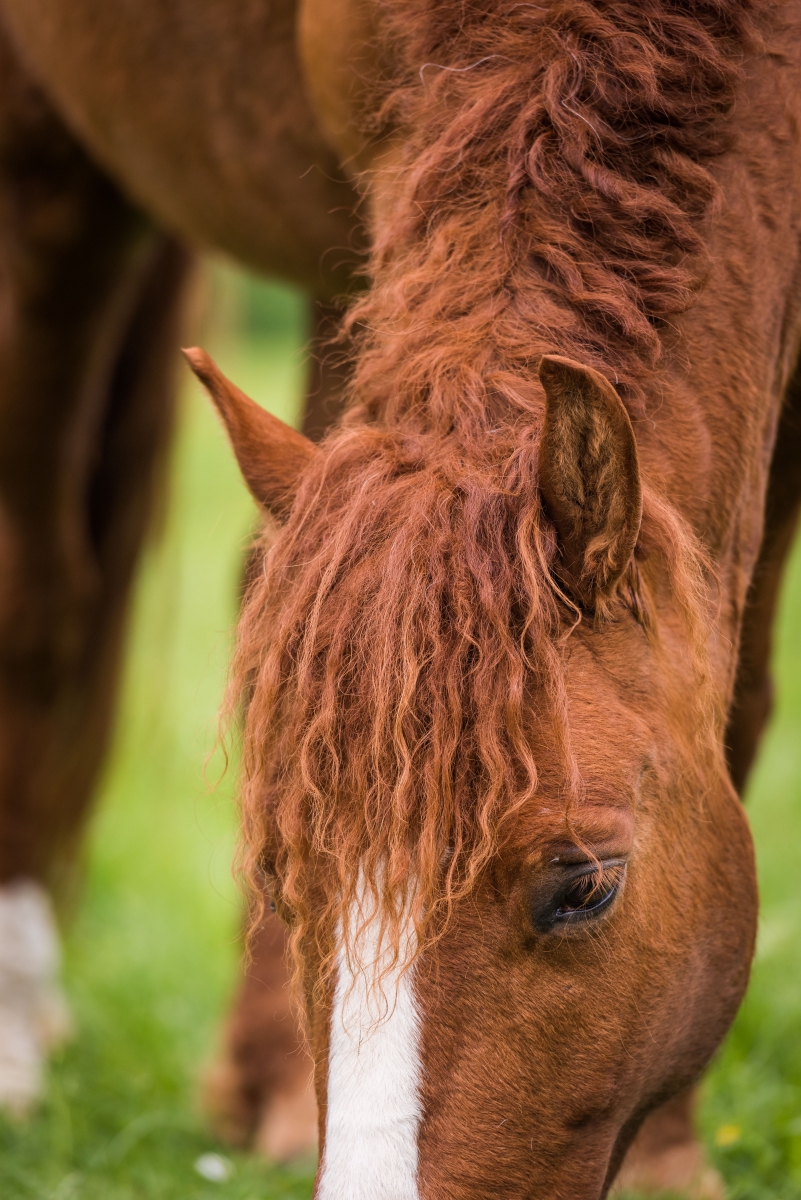
What are vitamins, macrominerals and trace minerals?
Although their name offers no indication, micronutrients bring great benefits to a horse's organism.Healthy horses need two kinds of nutrients in their bodies:
the more well-known are macronutrients like proteins, lipids (fats) and carbohydrates (sugars) which make up the organism and provide energy. Often, these nutrients get much more attention in horse feed than do micronutrients, which are at least as important.
Every animal needs a balanced supply of both kinds of nutrients so that its body can function properly.
Micronutrients – small building blocks, great benefits
In addition to energy, a horse’s body especially needs micronutrients, important factors in enzyme reactions to ensure the utilisation of macronutrients. These include vitamins, macrominerals and trace minerals. Micronutrients don’t deliver any energy themselves – rather, they act as building blocks for growth, maintenance and development of tissue, energy metabolism and other metabolic reactions.With few exceptions, micronutrients must be taken in with food, which is why they are also called essential micronutrients. After ingestion, the micronutrients are broken down into their individual molecules during the digestive processes. These small molecules then pass through the intestinal mucosa into the bloodstream and on to the areas of the body where they are needed.
The quantities that need to be absorbed depend on the horse’s needs and its body’s ability store them. Overall, the body requires much smaller amounts of micronutrients than macronutrients.
In contrast to macronutrients, micronutrients fulfil very special functions in the body and are not interchangeable. There are also dependent reactions between micronutrients so that a deficiency of one nutrient can also cause a deficiency of another. If a micronutrient is therefore lacking over any length of time, a horse can not only fall ill, but deathly ill.
Possible causes for a nutritional deficiency could be:
- unbalanced feeding from a lack of supply or poor keeping unsuitable for horses
- regional variations in the mineral stores of micronutrients (soil, drinking water)
- through illness causing a high loss of nutrients (diarrhoea, excessive perspiration)
- through illness requiring a high level of nutrients (metabolic illnesses, sweet itch)
- from physiological properties that warrant an increased dietary allowance.
An optimisation of the supply of macronutrients also requires an adjustment to the supply of macronutrients to provide the horse with optimum support.
Micronutrients are divided into three main categories:
- Vitamins
- Macrominerals
- Trace minerals
Vitamins
 Why do horses need good hay, fresh grass and sunlight?
Why do horses need good hay, fresh grass and sunlight?
Vitamins are the smallest organic substances, and important components of most metabolic processes. Horses are generally unable to make their own vitamins. However, horses can actually produce some vitamins, partially or even completely, via self-synthesis from so-called provitamins (precursors of the actual vitamins). An important example of this is vitamin D production through UV rays. This in turn is responsible for the production of the hormone calcitriol, which facilitates the storage of calcium in the bones. In horses, self-synthesis takes place mainly in the large intestine through microorganisms, and through the absorption of added vitamins in the small intestine. There are two clear aspects regarding vitamin supply and need: original vitamin content in feed and the performance of vitamin synthesis in the digestive tract.Vitamins are divided into two general categories according to their solubility: fat-soluble vitamins and water-soluble vitamins. With this division, one can also make an initial breakdown of their function: Fat-soluble vitamins are primarily needed for building and maintaining tissue structures. Water-soluble vitamins by contrast are important factors in metabolic processes. An individual horse’s vitamin requirements are always dependent on the animal’s use, age and medical history as well as the level of microbial synthesis in its intestine. Horses that suffer from chronic abdominal problems or infections often have serious vitamin deficiencies afterwards. But special attention must also be paid to the nutrition of older horses, as the absorption capacity in the intestine and storage capacity in the liver is reduced.
Natural feeds show large fluctuations in their vitamin content, due not only to the type of feed selected, but above all to its quality. For example, sun-dried hay contains much less beta-carotene, the provitamin of vitamin A, than fresh grass, but it does contain a substantial amount of vitamin D as a result of UV radiation. Nevertheless, hay, fresh grass and sunlight, i.e. actually all elements of appropriate horsekeeping, are the most important ingredients in the horse's natural supply of vitamins.
Macrominerals
Why is the calcium to phosphorous ratio so important in horse feeds?
Mineral substances fall into the two categories of macrominerals and trace minerals. The difference between the two micronutrients lies in the quantity in which they are present in the horse’s body and how much must be supplied through feed.The amount of macrominerals in the body of a horse averages 50 mg per kg of body weight. The level of trace minerals in the body of a horse is much lower, ergo the choice of name for these mineral substances. The macrominerals horses need include calcium, phosphorous, magnesium, sodium, potassium, chlorine and sulphur.
In horses, the focus is primarily on the right calcium-phosphorus ratio because these two elements alone make up 70% of the total mineral content in a horse's body. One sees this delicate balance directly in the percentages of nutrients stored in the horse's body. About 7 kg of calcium will be stored primarily in the skeleton, i.e. in the bones. Phosphorus, only about 4 kg, is also primarily stored in the skeleton. These amounts indicate the necessary ratio of minerals in the feed to provide the animal with an optimum supply and maintain a healthy calcium to phosphorus ratio. It should ideally range between 1:1 and 3:1 in the horse's feed. The optimum calcium to phosphorous ratio is 1.4:1.
Alongside building bones, the macromineral calcium is necessary in cells. Within the muscle cells it’s the calcium ions that enable muscle contraction. It is also needed for transmitting nerve impulses and supports blood coagulation. Pregnant mares need about 50% or even 100% more calcium in the last trimester of gestation and during lactation. But even with horses kept in stalls, one should keep an eye on their supply of calcium, since it is mainly exercise that enables calcium storage in the bones. A long-term calcium deficiency causes skeletal demineralisation, which in turn can lead to rickets and increased bone fragility.
 Phosphorous, like sulphur and chlorine, is an anion. Calcium, magnesium, potassium and sodium are cations – if there is an excess of one nutrient, this can lead to greater release of another. An increase of feed containing phosphorus will cause an increased calcium mobilisation from the bones and increased elimination via the kidneys. When feeding a diet of phosphorus-rich cereals and cereal by-products (wheat bran, rice bran, etc.), one should therefore always make sure that sufficient calcium is also supplied to maintain the balance between calcium and phosphorus. Hay is a calcium-rich feed for horses – especially hay containing high amounts of herbs and legumes (lucerne, sainfoin, etc.). A feed ration rich in cereals and poor in hay can therefore affect the calcium-phosphorus ratio unfavourably. Cereals also contain a high amount of phytic acid. This can form insoluble bonds with various elements (such as calcium, magnesium, iron and zinc) so that they can no longer be absorbed by the horse’s body.
Phosphorous, like sulphur and chlorine, is an anion. Calcium, magnesium, potassium and sodium are cations – if there is an excess of one nutrient, this can lead to greater release of another. An increase of feed containing phosphorus will cause an increased calcium mobilisation from the bones and increased elimination via the kidneys. When feeding a diet of phosphorus-rich cereals and cereal by-products (wheat bran, rice bran, etc.), one should therefore always make sure that sufficient calcium is also supplied to maintain the balance between calcium and phosphorus. Hay is a calcium-rich feed for horses – especially hay containing high amounts of herbs and legumes (lucerne, sainfoin, etc.). A feed ration rich in cereals and poor in hay can therefore affect the calcium-phosphorus ratio unfavourably. Cereals also contain a high amount of phytic acid. This can form insoluble bonds with various elements (such as calcium, magnesium, iron and zinc) so that they can no longer be absorbed by the horse’s body.The elimination of calcium and phosphorus is mainly ensured by the kidneys and urine; the risk of urinary and intestinal stones increases with oversupply.
Other macrominerals such as magnesium, sodium, chlorine and potassium are eliminated through perspiration. These macrominerals are therefore mainly connected with balanced hydration. Supply can be provided easily by salt licks or, in the event of increased perspiration, by distribution of loose salt. However, free access to salt should always include free access to water so that urination and kidney function is not negatively affected. Proper horsekeeping should always include unlimited access to drinking water.
Trace minerals
Why do some horses need more zinc than others?
As their name suggests, trace minerals are found in very slight quantities, i.e. traces, in the body. Nevertheless, trace minerals are associated with almost every important metabolic process. Essential trace minerals are iron, copper, zinc, selenium, manganese, cobalt and iodine. One mineral in greater quantity, however, is iron, which nevertheless is said to be a trace mineral due to its functions in the body. Research is continually making new discoveries regarding the supply of trace minerals in equine nutrition.
An elevated supply of trace minerals can generally have a toxic effect on horses. Due to homeostasis, the body is however able to counteract increased intake to a certain extent with decreased absorption or increased elimination. A temporary deficiency can also be balanced through the body’s own storage capacities. It is also important to observe interactions between the trace minerals themselves, as they can act similarly to macrominerals and no element can act alone. Overall, they can facilitate, block or even inhibit each other.
Of special note is the trace mineral zinc. After iron, zinc is the trace mineral found in the highest concentration in the organism. Since zinc levels in hay fluctuate greatly, a basic supply – in contrast to iron – often cannot be covered even with a hay diet. Zinc in particular is a crucial component in protein and carbohydrate metabolism. It is necessary for building skin, horn, coat and mucus membranes.
Here is where clear differences are found amongst various horse breeds: Icelandics, especially those which are imported directly to Germany or Austria from this mineral-rich volcanic island, often develop zinc deficiencies. They suffer more often and more severely from skin diseases like sweet itch. Horses can tolerate a very high zinc surplus, but an increased zinc intake long-term may not only cause a copper deficiency, but also disturb the absorption of iron and even antibiotics. As mentioned above, the phytic acid in cereal feed can render the zinc useless for the horse’s body. One should therefore consider a cereal-free feed for horses with increased zinc requirements (for example those with sweet itch).
Micronutrients should never be administered freely under the theory that “more is better”. Interactions, antagonisms and chronic oversupply can lead to long-term liver damage and reduced absorption of other micronutrients.
Can a horse’s micronutrient needs be met naturally?
The equine organism’s physiology basically allows it to cover its micronutrient requirements sufficiently through purely natural means. However, it must be said that Europe’s soils have exhibited a drastic decrease in mineral availability in recent years. Plants can only absorb the minerals found in the soil. The loss of biodiversity in pastures is also leading to a loss of nutrients for horses. The change to "more yield in less time" is reducing the absorption capacity of plants, with monocultures and constant reseeding accelerating the depletion of the soil. These conditions make it almost impossible to provide a horse with sufficient mineral nutrients through hay and fresh grass alone. Even herbs won’t guarantee an adequate supply of minerals, as they too grow on the nutrient-poor fields described above. This supply should be checked regularly through blood counts and hair analysis in order to compensate for possible deficiencies or surpluses early on.In most cases it is essential to provide the horse with additional, synthetically produced micronutrients in order to adequately meet this requirement.
The following types of horses generally require more micronutrients:
AGROBS makes three mineral feeds that will cover your horse’s individual micronutrient requirements:
- Horses in growth stages
- Senior horses
- Overweight horses
- Underweight horses
- Sport horses
- Breeding horses
- Special breeds like Icelandics, Gypsy Cobs, Friesians and Iberians
AGROBS makes three mineral feeds that will cover your horse’s individual micronutrient requirements:
- Naturmineral - the natural supply of minerals
- Seniormineral - for increased requirements
- Weidemineral Cobs - for horses at pasture
- Gipfelstürmer Mineral - supplies as a vital substance concentrate all important micronutrients for a powerful musculature
Antonia Triebig, Bsc. Agriculture Sciences
December 2019, © AGROBS GmbH
December 2019, © AGROBS GmbH
Sources*:
- Hans Konrad Biesalski: Mikronährstoffe als Motor der Evolution, Springer-Verlag Berlin Heidelberg, 2015, DOI https://doi.org/10.1007/978-3-642-55397-4
- Meyer H., Coenen M.: Pferdefütterung, Enke Verlag Stuttgart, 2014
- Kamphues, J.; Coenen, M.; Eider, K.; Iben, C.; Kienzle E.; Liesegang, A.; Männer, K.; Wolf, P.; Zebeli, Q.; Zentek, J.: Supplemente zur Tierernährung: für Studium und Praxis, Schlütersche, 2014
- Bender, Ingolf: Praxishandbuch Pferdefütterung, Franckh-Kosmos Verlag, 2009
- Kolm G, Helsberg A, Gemeiner M. Variations in the concentration of zinc in the blood of Icelandic horses. Vet Rec. 2005; 549 – 51
- Gesellschaft für Ernährungsphysiologie. Empfehlungen zur Energie- und Nährstoffversorgung von Pferden. DLG Verlag. 2014
(* The sources refer to the content of the text and not to the product recommendations)



